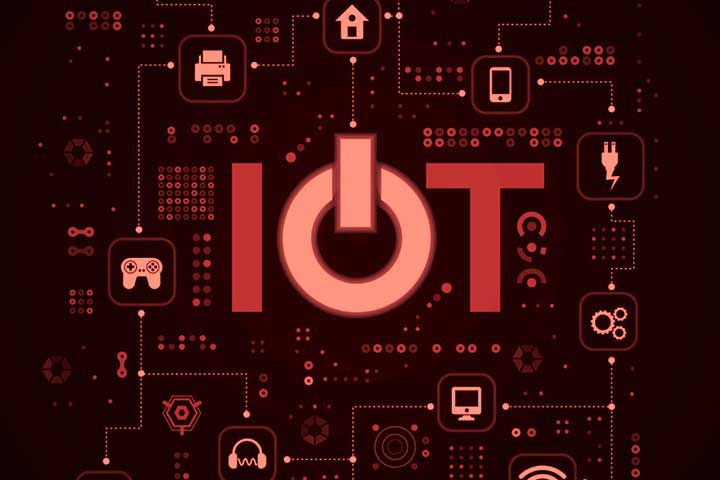Despite many studies addressing the integration of IoT into industrial processes, complexity and some confusion persist. However, with a minimum of common sense and anticipation while following basic safety rules, the “way forward” is not as difficult as it seems. Explanations.
Anticipate! As evident, this notion of anticipation must be an absolute rule, and it avoids many pitfalls. First, it is necessary to determine which type of material one must develop his prototype. The answer is essential by considering a notion of proof of concept (POC). “It is often advisable to start with open hardware and not with custom hardware to minimize the risk of blocking linked to the evolution of technologies and standards in the IoT. In other words, avoid being too specific to reduce unpleasant surprises. Likewise, it is preferable to use cellular modules with a significant technological scope: 2G, 3G, 4G, LTE-M… while considering the technologies explicitly deployed to certain countries. This implies another strategic point that should not be overused: a local device must be based on exact needs and mastery of the local environment. At the same time, equipment with global potential must integrate a technological environment with dimensions otherwise more complex.
Understand the use of the device
More and more devices belong to the world of intelligent monitoring. This concept guarantees remote control of a certain amount of data, particularly in transport, logistics, energy (for example, Linky metres)… It is therefore essential to know the use which is made of it. Indoor or outdoor, for example? “Depending on this criterion, the design will be impacted for reasons of protection, waterproofing, solidity, etc.”, On the same principle, knowing precisely where the device will be deposited and then used is also invaluable (underground, in the air, in a maritime environment, etc.). Indeed, this information makes it possible to anticipate the possible costs relating to the level of difficulty of access.
Another important point of vigilance, that of access to energy. In other words, is it a device that needs to be autonomous and on battery, or is it permanently connected to the current? “Depending on this power supply or not, the cellular technology to be deployed must be adapted since some technologies consume more energy than others “.
The possible obsolescence of the technology used should not be underestimated either. Indeed, in some countries, 2G is disappearing – or is already doomed. Often, if the temptation to invest in a module equipped with 2G is excellent because of a lower cost, the risk is just as great of seeing the device in question no longer working, having become obsolete.
Also Read: Artificial Intelligence For Business Software
Connectivity and data reporting come into play
By covering all the spectrum of needs, cellular connectivity (also called “SIM card”) is almost unique in the industrial world. Better still, from low speed to very high speed (5G), cellular connectivity opens up many uses: around high – even very high – definition video surveillance, autonomous cars, supervision of equipment (mainly medical), high-speed data back-up, etc. However, the role of low speed (LTE-M or NB-IoT) specific to the SIM card, which makes it very energy efficient, should not be underestimated either. A feature that can be useful in the case of applications such as the GPS positioning of a tracker or even intelligent monitoring for consumption readings. Nevertheless, the drawback associated with SIM network coverage not provided by all operators in a given territory, whether national or global, must be considered. “It is, therefore, necessary to base your device on multi-operator SIM cards, which will therefore connect to all available networks, “As for the reporting of data, two possibilities are envisaged. The data pass in a “classic” way via a public Internet or through private, secure networks (either by physical links or by VPN). In this case, a customer can demand that his SIM cards only communicate with the company’s servers.
Analysis and data security are inseparable
A primary point of IoT: data security. “The prerequisites for data analysis, Business Intelligence (BI), Artificial Intelligence (AI), big data, all of this is directly linked to data security. No IoT project is possible in 2022 if these concepts around data security are not considered. This notion of security is all the more true if the devices are located in many different places. However, even if this issue around data security is in all the minds of company managers, many “flaws” are too often observed in the development process of IoT devices. And the consequences can be dramatic. From a simple hacking of a device to the complete remote control of the equipment by ill-intentioned people, not only can the economic balance of a company be undermined, without counting on the degraded image if The media process is linked, but a vital risk can be incurred for the people concerned. When it comes to data analysis, the potential is vast. “Between behaviour analysis and customer targeting, the potential of this raw material represented behaviours almost infinitely,”
Finally, using common sense, managing an IoT solution in 2022 should not be seen as a complex task. You have to keep in mind the long-lasting aspect of an IoT solution. Indeed, technology very often tends to evolve in unforeseen directions. And manufacturers are sometimes tempted by the novelty of techno, thinking it will give them a head start over their competitors. The risk is that this techno will fall into disuse after a few years. ”
Also Read: How Much Of An Impact Will AI And The Metaverse Have On Future Digital Entertainment?

